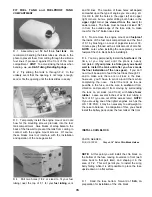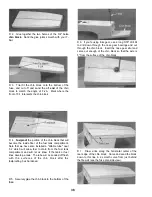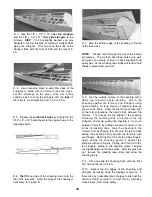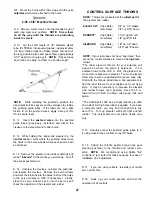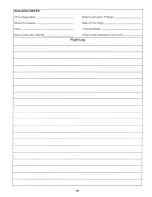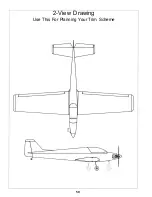
D 3 You may build the fillet on top of the fillet base in
one of the following ways.
Method 1: Glue pieces of soft balsa onto the fillet
bases, then sand to the fillet shape.
nice fillets behind the little formers using lightweight
filler.
D 5. If you used lightweight filler to form the fillet,
after sanding smooth you may spread a coat of thin
CA over the surface of the filler, then give it a final
sanding with 400 grit sandpaper This final coat is
easy to sand smooth, and gives the filler a hard,
durable surface to which covering sticks very well.
SHAPE THE FIN FAIRINGS
PARTS NEEDED:
D (1) US10S22 1/2" x 1-5/8" x 7-1/4" Balsa Dummy Stab
D (1) US10S23 3/8" x 7/8" x 7-1/4" Balsa Dummy Fin
D (2) US10F18 3/4" x 1" x 7-1/4" Balsa Fin Fairings
D 1. Using only one or two small drops of glue on
each piece, tack glue the following balsa parts
together (see sketch):
Method 2: Apply a good quality, lightweight model
filler (light spackle), shape it with a wet teaspoon, and
allow it to dry thoroughly before sanding.
Method 3: A combination of the above, where you
first glue pieces of balsa to partially fill the fillet area,
then add filler to form the fillet shape.
D 4. If you make a wing fillet as described above, it is
also a nice touch to blend in the belly fairing fillets to
the bottom of the fillets you just made An easy way to
do this is to attach the wing and glue small 3/32" balsa
fillet formers (from scrap) just behind the wing TE.
Carefully sand these formers to match the curvature of
the belly fairing fillets. Remove the wing, and make
D 2 Tack glue the above assembly to the stab
saddle with the "dummy fin" centered on the fuselage
centerline
44
Содержание Ultra-Sport 1000
Страница 7: ...7 DIE PATTERNS Use This Drawing To Identify Die Cut Parts...
Страница 57: ...57...
Страница 59: ...2 View Drawing Use This For Planning Your Trim Scheme 59...






